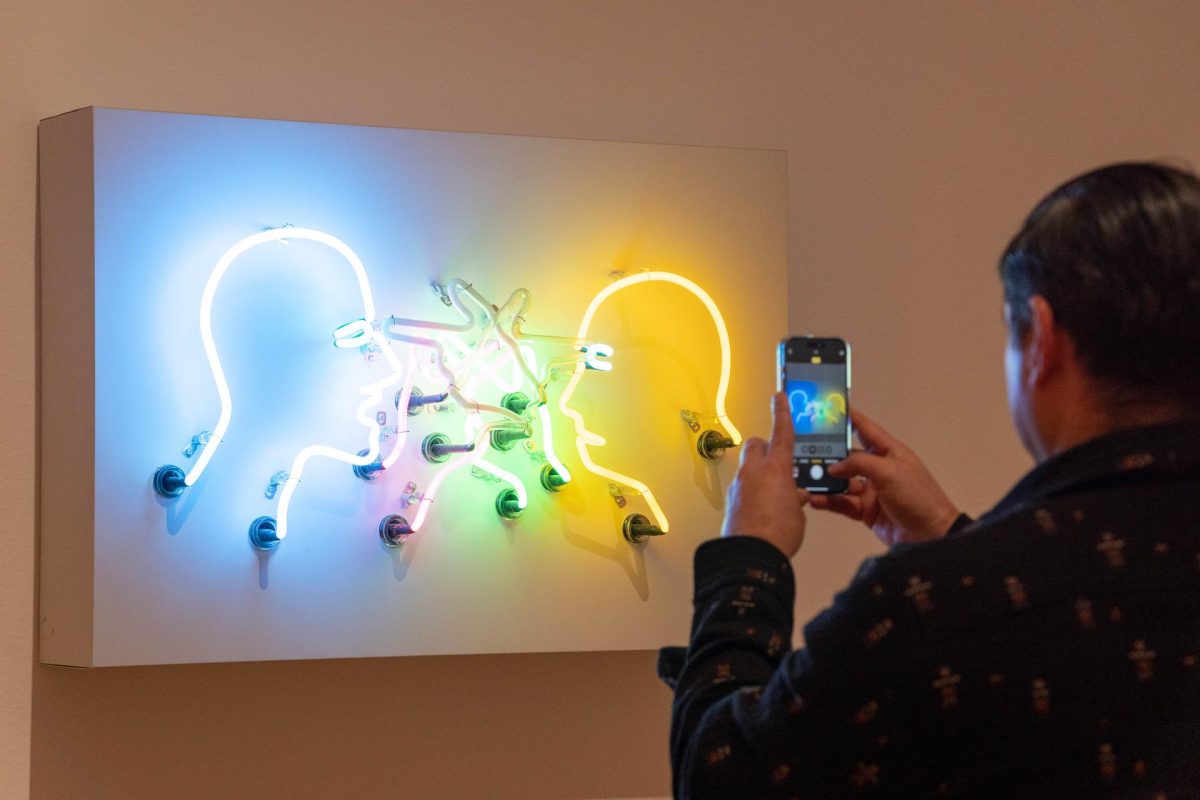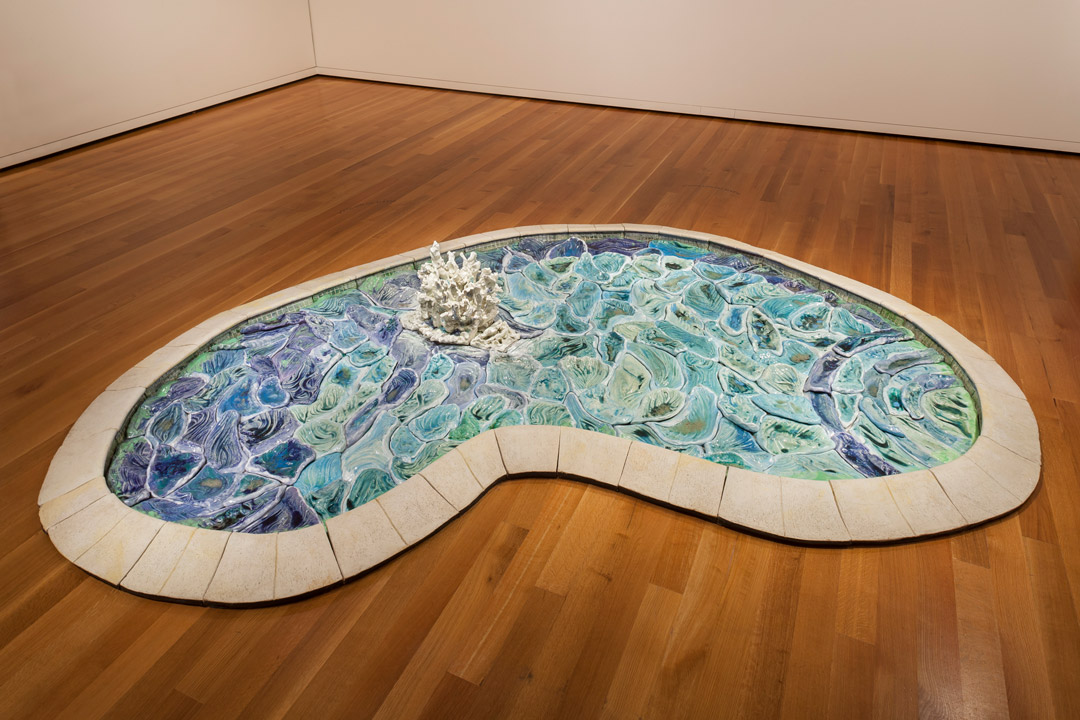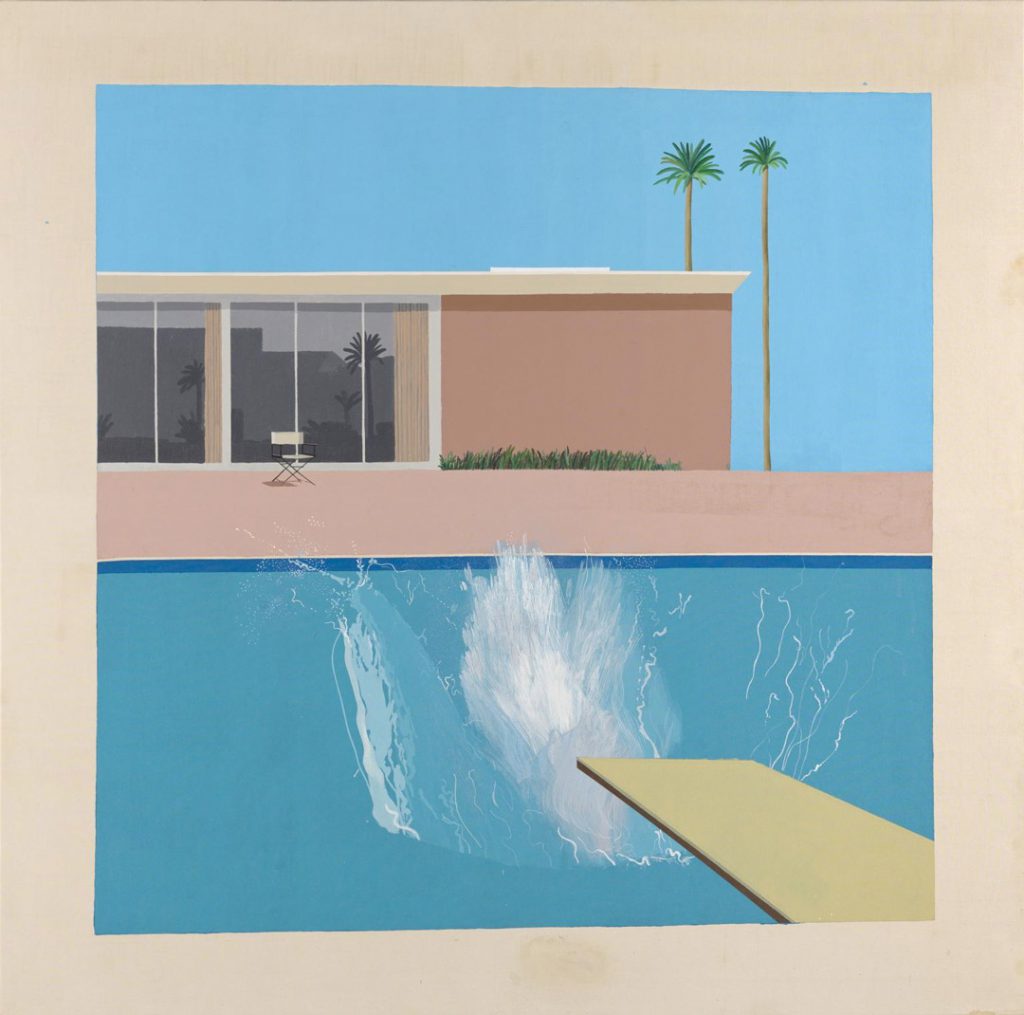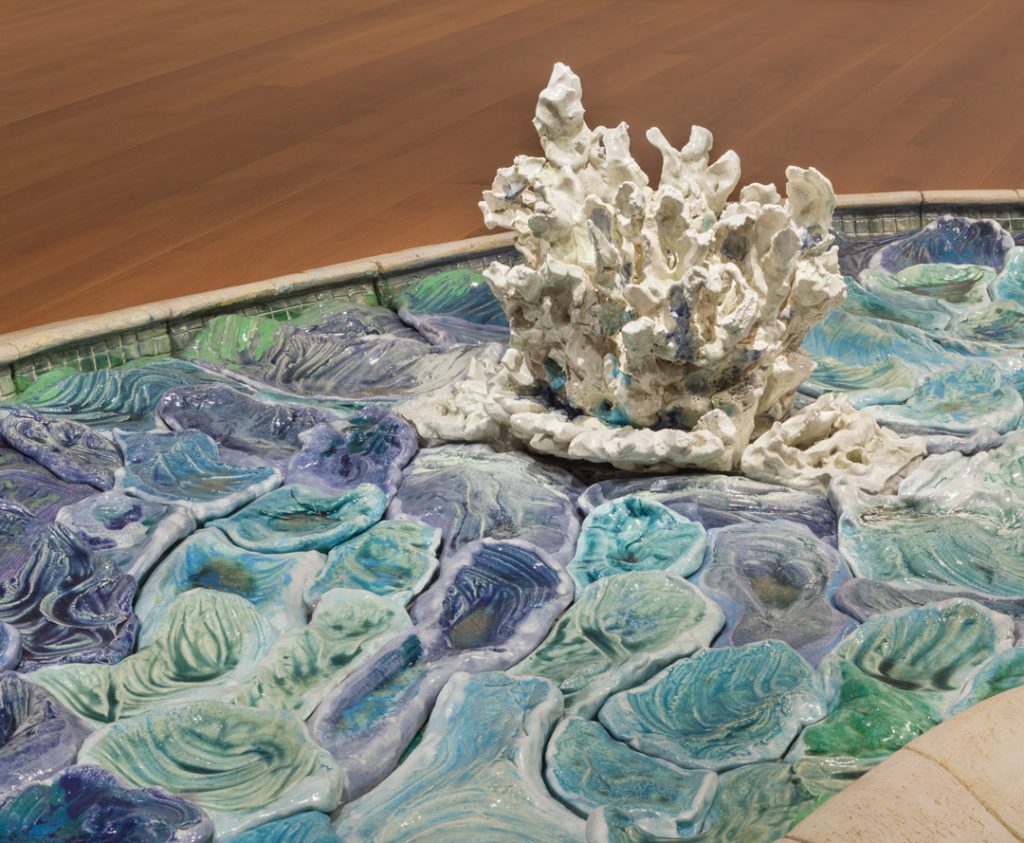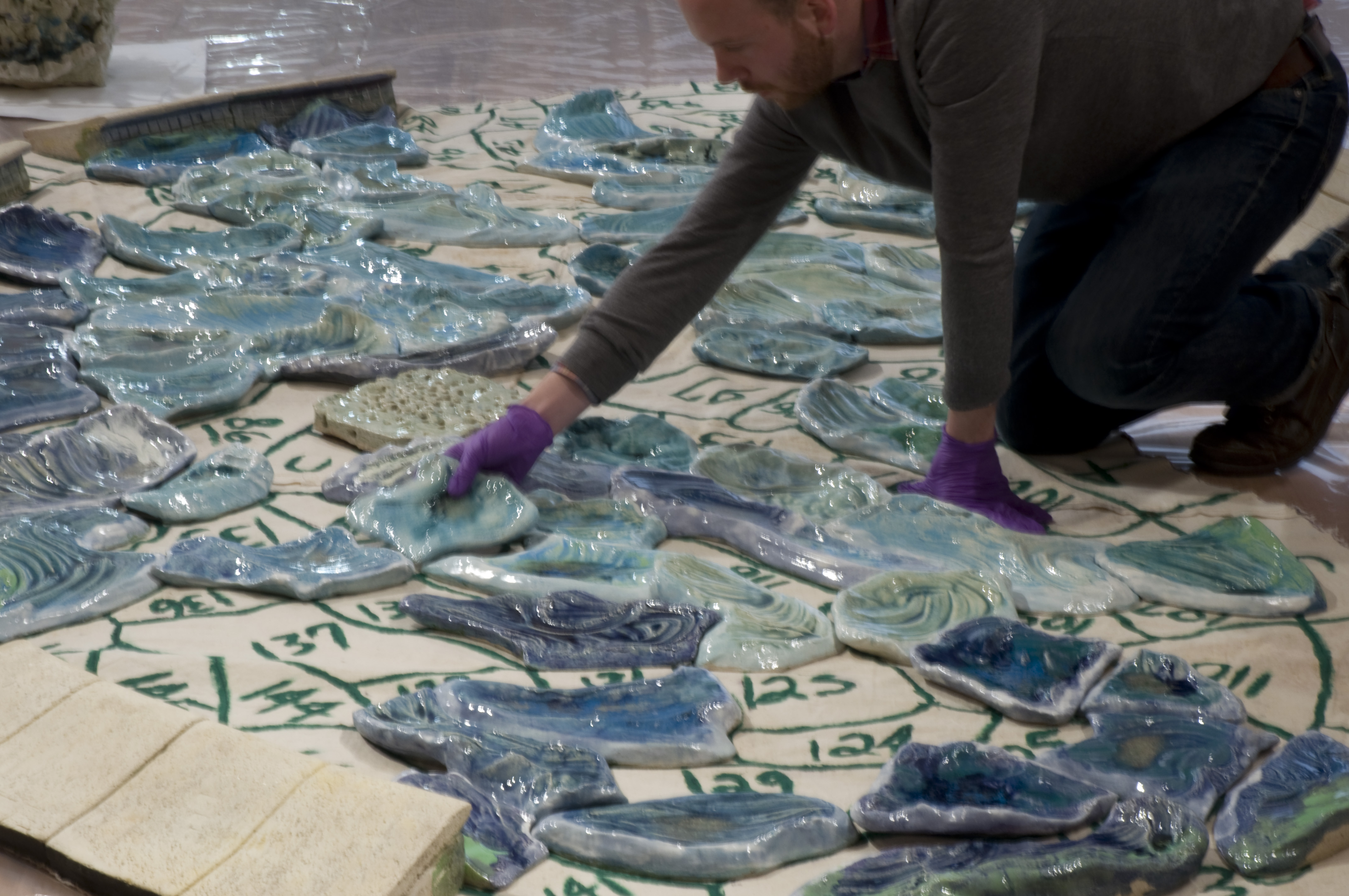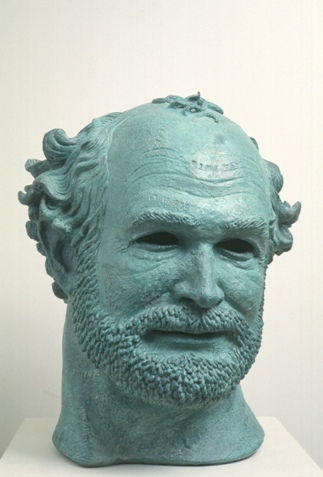Poke in the Eye Object Spotlight: Double Poke in the Eye II
Poke in the Eye: Art of the West Coast Counterculture is now on view at SAM! This homegrown exhibition features 87 ceramics, sculptures, paintings, and drawings from SAM’s collection—some of which are being shown for the first time. Throughout the run of the exhibition, we’ll be periodically sharing insight on a few of the eclectic artworks on view. Stay tuned for more object spotlights to come.
Did you know that Poke in the Eye: Art of the West Coast Counterculture derived its title from one of the artworks on view in the exhibition? It’s true!
Created by artist Bruce Nauman in 1985, Double Poke in the Eye II features two faces made up of bright neon tubing. The figures look at one another while the hands in between them alternate lighting up. There is a slight delay between when the hands light up, but the two figures are always simultaneously poking each other in the eye, both at fault. Their pointed fingers just barely touch one another’s eyes and one face has its mouth open, seemingly arguing.
Nauman began making works in neon in the 1960s, often using wordplay and both text and figurative imagery, to address “pain, life, death, love, hate, pleasure” to quote the title of another neon work by him that puts those words into a never-ending circle. Neon is typically used for commercial advertising, attracting the consumer’s eye to a storefront, but Nauman’s signs twist this commonly recognized aesthetic to question philosophical and artistic ideas.
Nauman was born in Fort Wayne, Indiana and attended the University of Wisconsin, Madison to study mathematics, physics, and art, then the University of California, Davis for his MFA. UC Davis was a hub for artists who rejected abstract and minimalist aesthetics and boundaries of low and high art. William T. Wiley and Robert Arneson were among those who taught Nauman at Davis and are also featured in Poke in the Eye.
Nauman mainly studied sculpture, but after graduating, became known for his performances recorded in his studio space. Nauman captured himself doing repetitive tasks and exercises; for example, Walking in an Exaggerated Manner around the Perimeter of a Square, 1967–68, is ten minutes of Nauman doing just what the title describes. Watching these mundane actions captured on film draws attention to the topics of surveillance and privacy, as well as the human body’s physical limits and abilities, and what qualifies as art. To Nauman, anything an artist does in his studio is art and one of the most accessible materials an artist can use is his own body.
Though Double Poke in the Eye II is not a performance piece, it echoes some of these themes. It mimics an endless, repetitive action as the figures go back and forth poking one another. Due to the way the lights click off and on and make the work change moment to moment, the viewer can get caught up watching this pattern repeat, trying to observe the whole sequence. In the way that viewers watch Nauman’s own body perform these repetitive actions, here we have people performing the same simple poke, again and again. Though the neon colors make this scene cartoonish, this piece illustrates a moment of pain and bodily harm that the viewer is forced to watch.
Yet, a “poke” has less serious connotations than a punch, a jab, or a stab to the eye. A poke is slightly silly. We “poke fun” at things to make light of them. The word choice for the title is significant because Nauman is also interested in the role of language in his art.
The gaps where language is imprecise are part of what Nauman wants to tease out. In 1989, Nauman said:
“When language begins to break down a little bit, it becomes exciting and communicates in nearly the simplest way that it can function: you are forced to be aware of the sounds and the poetic parts of words. If you deal only with what is known, you’ll have redundancy; on the other hand, if you deal only with the unknown, you cannot communicate at all. There is always some combination of the two, and it is how they touch each other that makes communication interesting.”1
The work isn’t just a poke in the eye but a “double poke” which is a not a common phrase: Is it a double poke because of the two figures poking one another? Or because there are two eyes as possible targets? Or could they be poking twice in a row?
Besides the verb of “poke”, the emphasis on the eye in this work is key—damaging someone’s vision impairs a major way of interacting with the world, limiting the way they can perceive others, art, and everything around them.
Double Poke in the Eye II is open to interpretation and double meanings. When asked about what the title of this particular work means on a SAM questionnaire, the artist simply replied “It is what it is.”
For the exhibition though, this title represents the experimental modes that these artists used to depart from their contemporary artistic movements and seek something new. Many of these artists in Poke in the Eye depicted figures in their work (rather than abstraction); worked with neon, ceramics, and textiles (rather than paint and canvas); and were silly and self-effacing (rather than serious).
Artworks like these are a type of a poke in the eye—they stand out as offbeat and off-kilter from expectations of what art should be.
– Nicole Block, SAM Collections Associate
1 John Yau, “Words and Things: The Prints of Bruce Nauman”, in Bruce Nauman Prints 1970-89, ed. Christopher Cordes (Castelli Graphics: New York, Lorence Monk Gallery: New York, Donald Young Gallery; Chicago, 1989), 10.
Photo: Chloe Collyer.
